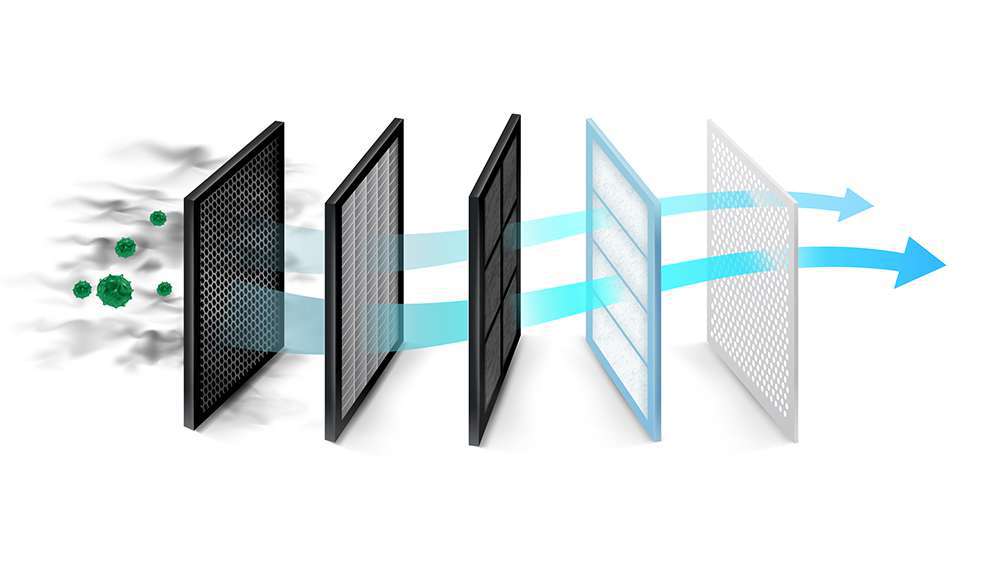A medium filter is a type of air or liquid filter designed to capture particles and contaminants that fall between coarse and fine filtration categories. Typically, medium filters operate with a Minimum Efficiency Reporting Value (MERV) ranging from 8 to 13.
What is a Medium Filter?

1. Applications of Medium Filters: Medium filters are widely used in heating, ventilation, and air conditioning (HVAC) systems. They help maintain indoor air quality by trapping airborne particles, thus reducing the load on downstream HEPA filters, which are often more expensive and require frequent maintenance. In fact, studies show that using medium filters can lead to a 15-20% increase in the overall efficiency of HVAC systems, resulting in significant energy savings.
2. Types of Medium Filters: There are several types of medium filters, including pleated, panel, and bag filters. Pleated filters typically have a larger surface area, allowing them to capture more particles while minimizing airflow resistance.

3. Importance of MERV Ratings: When selecting a medium filter, understanding the MERV rating is crucial. A MERV rating of 8 can capture 70-85% of particles between 3 to 10 microns, while a MERV rating of 12 can capture up to 90% of these particles. Higher MERV ratings often indicate better filtration efficiency but may also require more frequent replacements and can restrict airflow if not properly matched to the system. This balance between air quality and system performance is vital for optimal operation.
4. Maintenance and Replacement: Regular maintenance and timely replacement of medium filters are essential for ensuring their effectiveness. It is generally recommended to replace medium filters every 3 to 6 months, depending on the environment and usage. In high-dust areas or during allergy seasons, more frequent changes may be necessary. Neglecting filter maintenance can lead to increased energy costs and reduced system efficiency.

ASHRAE Standard 52.2- This standard provides methods for testing the efficiency of air filters, including medium filters.
ISO 16890- An international standard that classifies air filters based on their efficiency in capturing particulate matter.
MERV Ratings- Established by ASHRAE, these ratings help consumers select the appropriate filters based on their filtration needs.
EPA Guidelines- The Environmental Protection Agency offers guidelines on indoor air quality and the use of filters in HVAC systems.
Which type of filter is the best?

1. Types of Filters
When considering the best type of filter, it’s essential to evaluate the specific application. For air filtration, HEPA filters are often regarded as the best due to their ability to capture 99.97% of particles as small as 0.3 microns. For water filtration, activated carbon filters excel in removing contaminants and improving taste. Ultimately, the best filter depends on the intended use and the specific contaminants that need to be addressed.
2. Efficiency and Cost
Efficiency and cost are critical factors in determining the best filter. While high-efficiency filters may have a higher upfront cost, they often provide better long-term savings by reducing energy consumption and maintenance needs.
3. Maintenance and Lifespan
A good filter should also be easy to maintain and have a reasonable lifespan. Filters that require frequent replacements can lead to increased costs and inconvenience. Ideally, the best filters should have a long service life and be easy to clean or replace, ensuring consistent performance without excessive effort or expense.
What are the characteristics of a good filter medium?

Filtration Efficiency
A good filter medium should exhibit high filtration efficiency, meaning it can effectively capture a wide range of particles, including dust, allergens, and pollutants. This characteristic is crucial for ensuring clean air or water, contributing to better health and environmental quality.
Durability
Durability is another essential characteristic. A robust filter medium should withstand various environmental conditions without degrading, ensuring long-term performance and reliability.
Do medium filters restrict airflow?

Airflow Considerations
Medium filters can restrict airflow to some extent, depending on their design and density. While they are effective in capturing particles, a denser filter may impede airflow more than a less dense one. It’s important to choose a filter that balances filtration efficiency with adequate airflow to maintain system performance.
Impact on Systems
In HVAC systems, restricted airflow can lead to reduced efficiency and increased energy consumption. Therefore, selecting the right medium filter is crucial to ensure that it does not overly restrict airflow while still providing effective filtration.

Choosing the Right Filter
When selecting a medium filter, consider both the filtration needs and the system's airflow requirements. Opt for filters that are designed to maintain optimal airflow while still providing the necessary level of filtration. Regular maintenance and timely replacement of filters can also help mitigate airflow restrictions.
What is meant by median filter?

A median filter is a non-linear digital filtering technique often used to remove noise from images or signals. It works by replacing eACH pixel's value with the median value of the neighboring pixels within a defined window.
This method is particularly effective in preserving edges while reducing noise, making it a popular choice in image processing applications. Unlike linear filters, which can blur edges, median filters maintain sharpness and detail, making them ideal for applications where clarity is essential.
Median filters are widely used in various fields, including medical imaging, photography, and video processing, due to their ability to enhance image quality without introducing artifacts. Overall, the median filter is a powerful tool for improving visual data while minimizing unwanted noise.
In conclusion
while medium filters may restrict airflow, careful selection and maintenance can help ensure that they perform effectively without compromising system efficiency.
 +86 18186671616
+86 18186671616 Jason@cleanroomequips.com
Jason@cleanroomequips.com
 MENU
MENU



